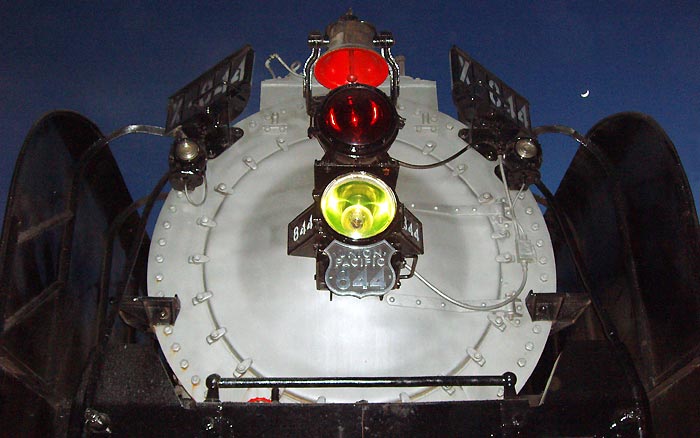Been wondering why (most) steam locomotives have the interior of their bells painted red. Is it really paint or perhaps some sort of protective coating? What gives?
Thanks!
Original Post
|




|
Replies sorted oldest to newest




quote:I sure don't remember the insides of any bells being painted red, back in the regular steam days.

quote:Originally posted by NJCJOE:
I have heard that they may have been painted red to act as a visual warning too. As the bell would swing, you would see the red flash, catching your eye.
quote:Perhaps the red paint serves many purposes?
quote:It looks cool?
quote:Volunteer labor at work.
quote:I'm curious as to why you would insinuate that it was Volunteers?
quote:quote:
I'm curious as to why you would insinuate that it was Volunteers?
quote:If you will go back up the thread, you will see that I was referring to the two photos posted of 844 and 3751, both excursion locomotives in the "modern era"!

quote:Exactly. Why would you insinuate that it was the volunteer's idea and not prototypical to begin with?
quote:Explain this.
quote:Originally posted by NJCJOE:
Explain this.

quote:Originally posted by Hot Water:
2) Neither the AT&SF nor the UP regularally painted the insides of their steam locomotive bells red, back in the steam days, i.e regular service.
quote:
quote:And WOW! Just look at that weathering job the Pennsy put on that loco. Looks just like the real thing!

Even a trivial reason would still be a "real" reason...quote:Originally posted by juniata guy:
we are always looking for "real" reasons something like this was done and, often enough, there wasn't a "real" reason.
quote:Originally posted by smd4:
I, *personally,* have never heard of nor seen a cast iron steam locomotive bell... Modern Locomotive Construction gives the formula for a bell's metal: 4 parts copper to 1 part tin; to every hundred pounds of mixture add 1/2 pound of zinc, and 1/2 pound of lead.

I did Curt. Still, it's interesting to see a steel steam locomotive bell (Thanks, NJ Joe). The WWII connection is even more interesting.quote:Originally posted by juniata guy:
Semantics, Steve. I'm sure you understood what I meant.
Curt
Access to this requires an OGR Forum Supporting Membership
